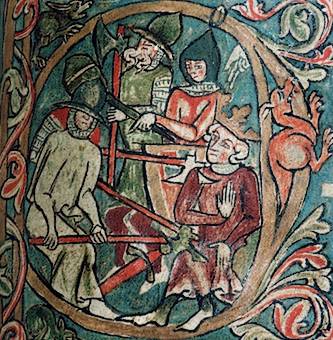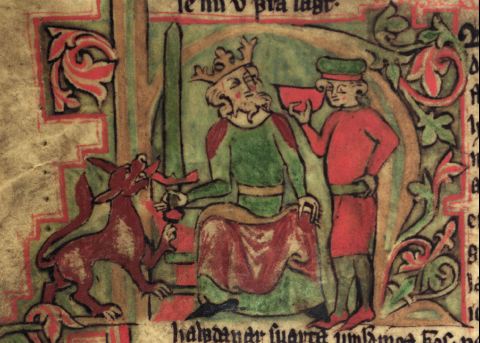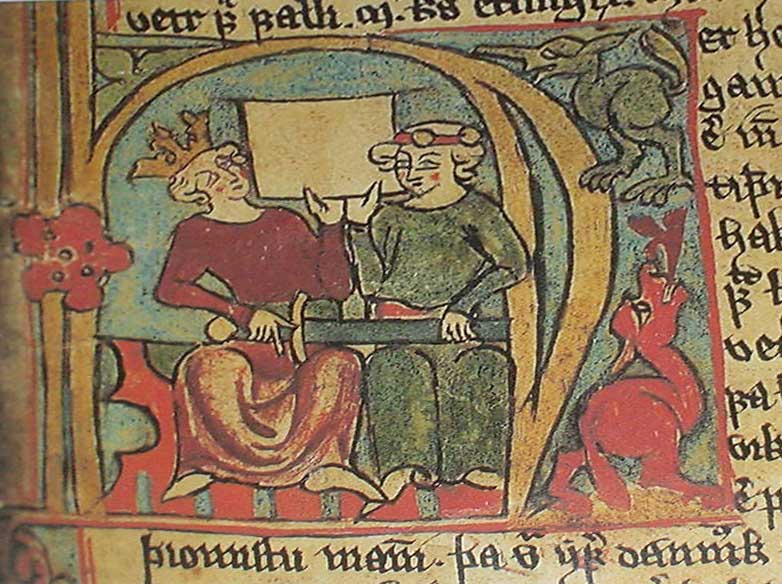


 |
 |
 |
Primary Source Analysis
Due: 15 March 2012: please submit an electronic copy via Turnitin on the companion BlackBoard site, no later than 10:00am.
Length: ca. 1000-1250 words (= ca. 4-5 pp. double-spaced , 12-pt font , at least 1” margins; your paper should not exceed 1500 words; include a word count on your front page, along with the standard identifying information: name, date, class, etc.).
References: attach a photocopy of the page(s) you discuss, marking where the passage you analyse begins & where it ends. If the passage is no longer than a single paragraph, quotations from it need not be referenced; for longer passages, please mark line numbers on the photocopy & refer to those when quoting. Quotations from other sources should include full bibliographic information; any recognisable reference format ( Chicago , MLA, Turabian, etc.) is fine, so long as references are clear, consistent & complete – and, of course, accurate. (The Chicago Manual of Style is available online.)
If you are unsure how to write references, please consult one of the many aids available to you (primarily Gordon Harvey, Writing with Sources, 2nd edn [2008], but also works like Diana Hacker, A Pocket Style Manual , 6th edn [2011], on the recommended readings list, or the Viking Age research guide webpage). If you still can't find an answer to your question, your instructor will, of course, be happy to help.
Rationale for this exercise
This assignment is designed to familiarise you with the process of researching Viking Age history. Primary sources, typically textual, are the basis for all historical research. Historians must return to these sources & analyse them directly in order to arrive at any conclusions about the past. While it is vital to take into account the work of other historians (= secondary literature), our hypotheses about the past stand or fall largely on our ability to offer convincing readings of the primary sources.
Procedure
Please select one of the substantial primary sources assigned up to Week VII (NB: some of the selections listed below excerpt passages from more than one source!):
Within the source you've selected, you should choose a short passage (typically not more than a single paragraph – at most 1-2 pages of text) that affords you some insight into Viking Age history. Be sure to choose a passage that was not discussed in detail in class. You are looking for a passage that reveals to you something about the Norsemen's political institutions, their material culture, the structure of their society, and so forth.
(You may, if you wish, work on a primary source not listed above, such as another saga or eddic poem; but you must clear your choice with Oren in advance.)
Your assignment will consist of a close reading of the passage you've selected. You should open by identifying concisely the insight you've derived from the passage, then proceed to demonstrate how you've arrived at it. There's no need to repeat what the passage says – I will be able to refer to the photocopy for details – so you should avoid paraphrase or mere summary. Instead, focus on analysing the content, form & implications of the passage: tell me what it means, why it is important, what questions it raises and how you would attempt to answer them, etc. Bear in mind that historical insight may come more in the form of questions raised than in that of answers supplied.
In analysing the passage, you should refer to your knowledge of the Viking Age derived from lectures, secondary readings, or other primary sources. Be sure to use these external sources of knowledge to provide context for your passage and illuminate its obscure points, however, rather than using the passage to exemplify or illustrate ideas established elsewhere. So, e.g. if you've read that Norsemen drank mead, you want to be able to say something more than “the vikings in this passage drink mead, which shows that this was a common Norse beverage.” Rather, your knowledge of Norse drinking habits might tip you off to notice a preoccupation in a selected passage with bee-keeping, or the disdain expressed in another passage at the notion of drinking mere water, and so forth. You will then be in a position to analyse the significance of the passage you study, e.g.: “Herjólfr is able to endure the killing of his sons, the rape of his wife, and the seizure of his livestock; though boiling with rage, he knows he stands no chance against the mighty Starkaðr. It is only when Starkaðr burns his bee-hives that Herjólfr finally flies off the handle, takes up his sword and sets out to kill his tormentor – or die trying.…”)
Assignments will be judged on:
Y ou are strongly encouraged to come in to office hours to consult with me about your essay. I cannot tell you what historical insights to get from your source, but I would be happy to discuss with you any problems you may be grappling with. Take advantage of the resource available to you in the person of your instructor!
Thinking ahead to the final assignment in the course, you may wish to use the opportunity to read this selection of primary sources with an eye towards locating promising themes on which to focus your Viking Age Reading Packet. Does the passage you've selected, or other passages you've examined, raise some puzzling or troubling questions about Viking Age history? Does it offer you an insight that you think might be applied to understanding other Viking Age evidence? Does it suggest to you a topic you would like to know more about? If so, this may be a good lead for organising your thoughts about what would make for a good Viking Age Reading Packet.
Problems?
Please be sure to contact Oren if you run into any difficulties.
Good luck!
return to HIS 3200 syllabus
Oren Falk, Associate Professor
Department of History, Cornell University
Page last updated on: 3 March, 2012